-
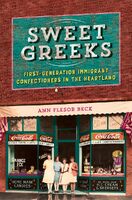
Ann Flesor Beck, a third-generation Greek confectioner, co-owns Flesor's Candy Kitchen in Tuscola, Illinois, situated 20 miles south of Urbana-Champaign. Based on her dissertation completed at UIUC, "Sweet Greeks" narrates the journey of Gus Flesor, Beck’s grandfather, from Greece to Tuscola, where he learned the confectioner's trade and started a candy business in the early 20th century. The book also sheds light on the Midwest immigrant experience, encompassing aspects like chain migration, immigrant networking, the challenges immigrant entrepreneurs face, as well as how Greeks have shaped the candy industry in America.
-
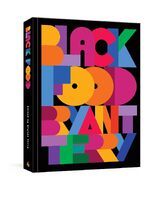
Weaving recipes, essays, poetry, and visual art into "Black Food," Bryant Terry creates “a communal shrine to the shared culinary histories of the African diaspora.” It’s not only a mouth-watering cookbook, but also a collection of stories, lifestyles, and explorations of justice across diaspora communities.
-
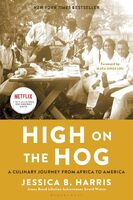
"High on the Hog" is not only a cookbook but also an engaging history of the African Diaspora and African American food traditions. Tracing the stories of people and food along the paths of the diaspora across the Atlantic, Jessica B. Harris celebrates the diverse foodways as a significant part of African American history, culture, and identity.
-
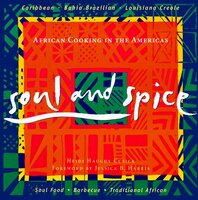
"Soul and Spice" is a recipe collection that spotlights African-influenced cuisines from the Western hemisphere. This includes dishes from the Caribbean, American South, and Brazil, as well as a special chapter dedicated to the cooking of recent African immigrants to the Americas. The recipes are sorted by food style, such as Soul Food, Barbecue, and Louisiana Creole. They're also categorized by place of origin like Bahia, Brazil, and the Caribbean, and by the people who brought them to America. Each recipe is complemented by detailed notes that provide historical context and personal anecdotes.
-
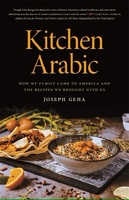
This is both a memoir and a cookbook by Joseph Geha, a Professor Emeritus of Creative Writing at Iowa State University. It captures Geha's early life as an immigrant in the Little Syria neighborhood of Toledo, Ohio, and his family's struggle to adapt to a new environment. Additionally, it is a collection of traditional Syro-Lebanese recipes, a treasured part of Geha's mother's heritage that remained constant despite changes in time and location. Geha emphasizes the vital role food plays in maintaining a connection to heritage, providing comfort, joy, and love, and transcending the need for spoken communication.
-
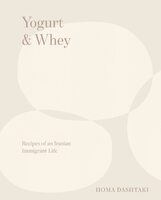
Practicing traditional Iranian methods of yogurt making passed down through her family, Homa Dashtaki runs the White Moustache Yogurt Company and continues to revitalize ancient yogurt dishes. This book features a hundred recipes that utilize yogurt and whey, a byproduct of yogurt making, in both traditional and innovative ways.
-
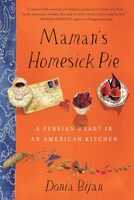
"Maman's Homesick Pie" is a captivating and emotionally rich memoir by Iranian American chef Donia Bijan, centering on her family's transition from Iran to California in 1978. Bijan uses food as a language to navigate her journey from her Persian roots to her American life, her culinary education in Paris, and her successful career as a bistro owner in San Francisco. The memoir features thirty inspired recipes that mix her Persian heritage with her expertise in French cooking. It also stands as a tribute to the women, especially her mother, who motivates us to fulfill our potential.
-
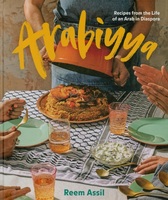
Reem Assil, the daughter of a Palestinian mother and Syrian father, shares meticulously written recipes for the dishes her family brought with them and those they created in their new homes. This cookbook serves as a cultural bridge for Arab families, especially those displaced and experiencing prejudice, using food as a healing link to their traditions. Assil often infuses her recipes with a blend of tradition and innovation, introducing unique twists to conventional dishes, such as incorporating cocoa nibs into Egyptian dukkah or adding hazelnut praline to baklava rolls.
-
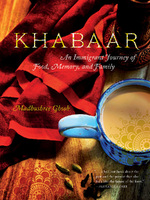
Madhushree Ghosh's "Khabaar" is a unique fusion of memoir, political commentary, and cookbook. It intertwines food, memory, and loss, tracing her remarkable journey. Ghosh's narrative starts with her early life as the child of East Bengali refugees in New Delhi and ends with her present role as a scientist and vice president of a global biotech company in San Diego. Viewing food as a powerful memory trigger that “makes us believe we’re still part of the land we left,” her story offers an intriguing exploration of identity, culture, personal and professional triumph, as well as provides vivid culinary descriptions that invite readers to connect with their own cooking experiences.
-
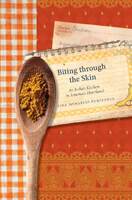
"Biting through the Skin" is a memoir and cookbook that presents a first-generation immigrant's view on growing up in America. Moving from Bengal, India, to Pittsburg, Kansas in 1964, Nina Mukerjee Furstenau’s family maintained their cultural and spiritual values, primarily through Bengali cooking, while also embracing American culture. Sharing the back-pocket recipes of her family, Furstenau invites readers to consider the role of food in preserving cultural heritage, fostering community, and creating a sense of belonging.
-
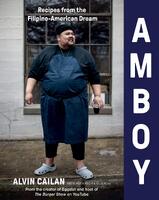
"Amboy" refers to Filipinos raised in America. Alvin Cailan, who was brought up in an immigrant family in East Los Angeles, has risen to become a professional chef and a significant figure in the Filipino food movement in America. This unique cookbook presents his life's journey through enticing recipes and intriguing stories.
-
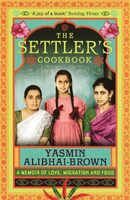
"The Settler's Cookbook" is a personal memoir that explores the history of Indian migration to the UK via East Africa through the lens of food and cooking. Yasmin Alibhai-Brown shares her family's journey from India to East Africa during British imperial expansion, their displacement from Uganda in 1972, and their subsequent relocation to the UK. The book delves into the hybrid culinary traditions of Yasmin's family through their unique recipes. For example, who would have thought a curry dish could be enhanced by adding ketchup?
-
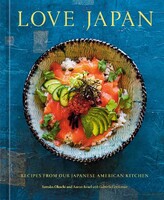
"Love Japan" is a collection of cherished family recipes from chefs Sawako Okochi and Aaron Israel, the married couple behind Brooklyn's Shalom Japan. These dishes, steeped in the Japanese flavors and techniques Sawako learned from her mother, are fused with influences from Aaron's Jewish heritage, as well as modern interpretations and evolutions.
-
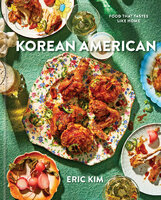
Eric Kim's debut cookbook, Korean American, is a collection of recipes and essays exploring his Korean-American identity. Growing up as the son of Korean immigrants in Atlanta, food played a pivotal role in Kim’s life. The book features recipes from Korean barbecue to innovative Korean-American fusion dishes, alongside essays on subjects like leaving home and the significance of Thanksgiving to a first-generation family. Kim's aim is to give readers a deep understanding of Korean culinary culture and how it intertwines with his American upbringing, ultimately illustrating how through food and cooking, he found acceptance and the confidence to own his story.
-
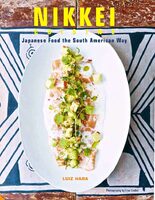
This book embodies the culinary traditions of the Japanese diaspora. In this captivating cookbook, Brazilian Japanese chef and author Luiz Hara explores the blend of Japanese and South American cuisines. He presents an array of recipes ranging from everyday dishes from his childhood to creations from Michelin-starred Nikkei chefs. Each chapter highlights a group of fundamental Japanese ingredients and their uses in traditional Japanese cooking, followed by innovative recipes designed for global kitchens.
-
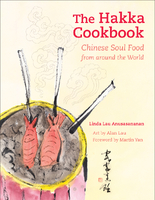
The Hakka, an ethnic group originating from Northern China, has dispersed and established communities throughout Asia and the world in a series of migrations spanning a thousand years. Linda Lau Anusasananan embarks on a journey from her family kitchen in California to the Hakka homelands in China, gathering over 140 Hakka recipes from around the world, including Hong Kong, Taiwan, Singapore, Malaysia, Canada, Peru, and more. She considers Hakka cooking a form of "soul food," reflecting a "shared history of hardship and oppression."
-
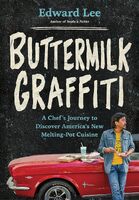
Chef and writer Edward Lee spent two years traversing America to uncover intriguing food stories. "Buttermilk Graffiti" encapsulates sixteen adventure narratives about food traditions from around the world, now rooted in different corners of the country, and the individuals who uphold them. It chronicles Lee's journey through a Uyghur cafe in New York, a Korean restaurant in Alabama, a German sausage shop in Wisconsin, and more, revealing a fresh new page of American cuisine. Inspired by these experiences, Lee has also created forty new recipes that allow us to introduce these diverse dishes to our own kitchens.
-
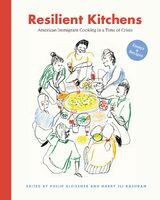
This collection of essays explore the experiences of immigrants in the U.S. through the lens of culinary practices and food system, particularly during the COVID-19 pandemic. It combines personal narratives and investigative journalism, and includes recipes that allow readers to engage with the stories in their own kitchens.
-
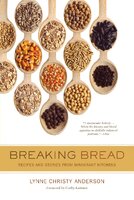
Cape Verdean Katxupa, Italian Fettuccini, Russian Mushroom Casserole, Brazilian Peixada, Moroccan Couscous, Indian Lamb Biriyani, Vietnamese Goi Cuon, and Tuong Ngot...each dish tells the stories of individuals and families who have left their homelands but retained memories of home through their cooking. "Breaking Bread" encapsulates Chef Lynne Anderson's exploration of immigrant kitchens in the United States, demonstrating how food can evoke memories of a lost world for those who have left much behind.
-
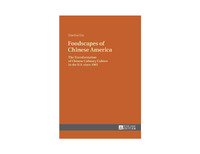
This book investigates the transformation of Chinese food in the U.S. after 1965, analyzing its symbolic meanings and cultural functions. It explores how Chinese food mirrored and shaped the relations between the Chinese community and mainstream white society, with a specific focus on the social and cultural shifts in California.
-
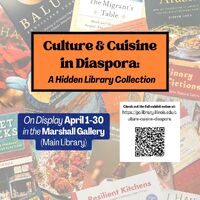
-
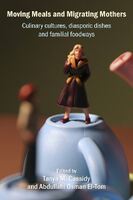
"Moving Meals and Migrating Mothers" is an interdisciplinary study on the interrelation between food, migration, and family. It investigates how migration and global foodways influence aspects like infant feeding and home cooking, and how these factors reflect on identity, particularly in relation to the gendered labor of mothers.
-
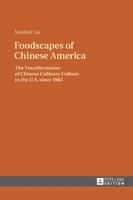
This book investigates the transformation of Chinese food in the U.S. after 1965, analyzing its symbolic meanings and cultural functions. It explores how Chinese food mirrored and shaped the relations between the Chinese community and mainstream white society, with a specific focus on the social and cultural shifts in California.
-
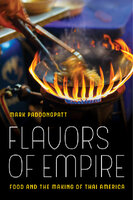
"Flavors of Empire" explores the rise of Thai food in America, particularly in Los Angeles during the 1980s, and how it shaped Thai American identity. The book discusses how Thai immigrants adapted and marketed their cuisine to suit American tastes, and how these shifts in food culture reveal the racial and ethnic dynamics of the Thai American experience.
-
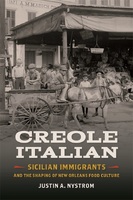
"Creole Italian" explores the impact of Sicilian immigrants on New Orleans' food culture from the mid-1830s to the 1970s. The book argues that their influence on the city's foodways, traditionally undervalued, significantly contributed to shaping the food landscape of New Orleans, along with African, French, and Spanish culinary traditions.
























